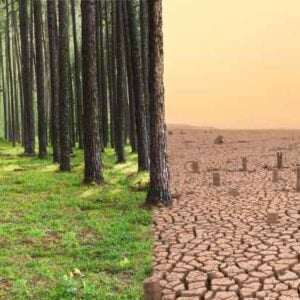One month ahead of COP30, the “Forest COP,” Climate Policy Initiative/PUC-RIO (CPI/PUC-RIO) released a report emphasizing the central role tropical forests must play in global climate strategies. The study introduces the Reversing Deforestation Mechanism (RDM), a proposed financing framework designed to drive large-scale forest restoration. According to the report, if fully implemented, RDM could generate up to US$100 billion in annual revenue for countries with tropical forests, transforming these ecosystems into high-value climate assets.
The report was commissioned by COP30 President, Ambassador André Corrêa do Lago, who convened a council of economists to provide guidance on the economic dimensions of COP30, contributing to the ‘Baku to Belém Roadmap to 1.3T’ and the COP30 Action Agenda. Juliano Assunção, executive director of CPI/PUC-Rio, highlighted that tropical forests are indispensable in mitigating climate change, yet global efforts remain insufficient. Even with current NDCs implemented, the planet is on track for a temperature rise of 2.6°C to 2.8°C, making carbon removal from forests a critical priority.
CPI/PUC-RIO researchers analyzed 91 tropical forest countries, covering 1.27 billion hectares and storing approximately 593 GtCO₂, equivalent to one-third of historical global emissions. Despite this, deforestation has caused annual losses of over 10 million hectares over the past decade. Restoring areas deforested since 2001 could recapture up to 49 GtCO₂, presenting both an urgent need and a significant opportunity for climate action.
The RDM offers financial incentives for restoration, ensuring long-term political commitment and enabling forests to provide climate mitigation, biodiversity protection, and sustainable development. At a carbon price of US$50 per ton, RDM could yield over US$5,000 per hectare across 170 million hectares, potentially removing up to 2 GtCO₂ annually and generating roughly US$100 billion in revenue. In the Amazon alone, RDM could reverse 30 years of emissions, capturing 18 GtCO₂ and generating approximately US$30 billion annually.
Unlike existing mechanisms such as jurisdictional REDD+ and the Tropical Forests Forever Facility, RDM focuses specifically on financing large-scale restoration rather than just halting deforestation. The mechanism is structured as a bilateral agreement between buyers—governments, multilateral institutions, or private entities—and jurisdictions, with results-based payments tied to verified carbon removals. Funds generated would support deforestation prevention, forest protection, restoration, and socioeconomic development of local communities.
RDM is designed to complement existing climate finance mechanisms, offering a scalable, transparent, and efficient pathway to convert degraded tropical forests into high-impact climate assets. Assunção emphasizes that mobilizing long-term, robust financing is critical to fully realize the potential of tropical forests. COP30 presents an opportunity to consolidate a global financial framework capable of supporting these restoration efforts and securing the climate, ecological, and economic benefits of tropical forests.







